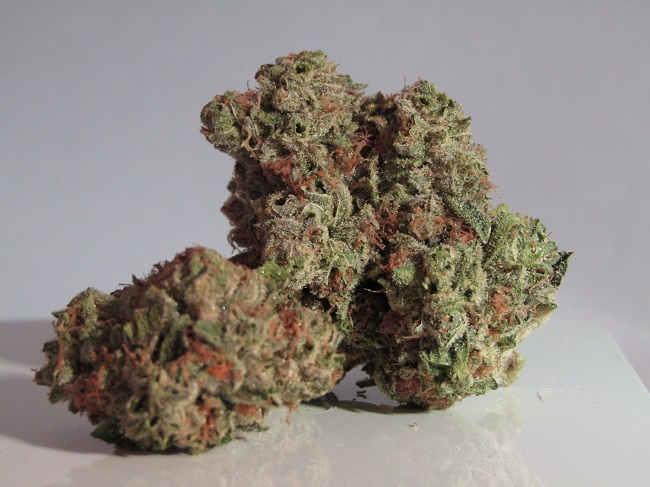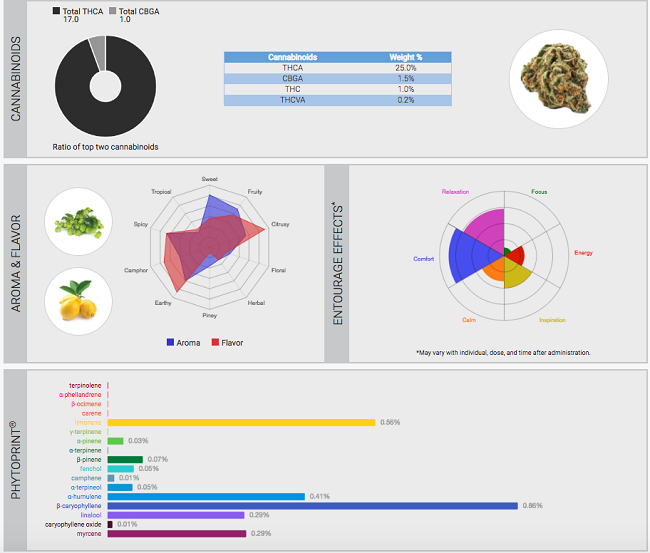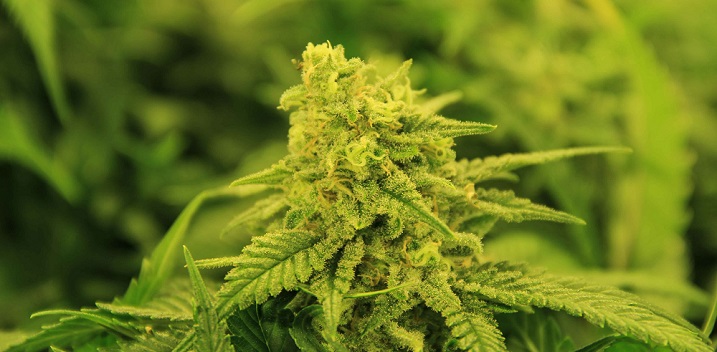Cannabis scientists are exploring terpenes and discerning consumers are only too happy. This post from Mashable highlights why weed companies are experimenting with terpenes.
Chicken and waffles. Moscow Mule. Gingerbread cookies. Plum.
Joe Edwards says he’s made cannabis flower taste like all of the above and then some, using a high-tech curing unit produced by Colorado startup Yofumo.
The plum was made specially for his grandma who uses cannabis for her arthritis pain but hates the taste.
“My grandmother has no interest in Skunk No. 1,” Edwards, vice president of client applications and deployment at Yofumo, jokes, referring to a popular cannabis strain that smells, well, skunky.
Yofumo is part of a growing contingent of companies using science and tech to experiment with cannabis terpenes. Terpenes are aromatic organic compounds found naturally in marijuana, and they impact weed’s flavor and smell. The type and amount can also have varying biological effects when paired with THC and CBD, according to marijuana researchers.
As terpene experimentation advances, more producers are adding the amount and type of terpenes in their offerings to product descriptions. The compound, lesser-known among the general public, is something consumers are becoming more aware of as they seek out a specific kind of high — or flavor.
“It’s part of educating people that they can make better choices,” adds Henry, who has a Ph.D. in population genetics and has analyzed 5,000 cannabis plants to study terpenes and genetic markers.

Sometimes marketing gets in the way of information in the cannabis field. Blue Dream is a popular strain, but some producers may call their plant Blue Dream even if it isn’t the same as the original product, Henry says. Knowing more about the flower’s chemical expression, and how you react to that mix, helps you as a consumer.
“It’s synergism,” says Mark Lewis, founder and president of NaPro Research in California. He compares a single terpene or a single cannabinoid, be that THC or CDB, to a note — but when everything works together, it’s a chord.
While terpene levels in cannabis flower tend to be below 2 percent and cannabinoids hover around 20 percent, NaPro tweaks that through breeding plants with desired attributes together over several years. They’ve amped the terpene level up to 7 percent and THC down to 9 percent in one plant for a client entering a competition that awards top quality cannabis. Changing a plant’s composition can take years of breeding. Think about how watermelon today looks and tastes different than it did thousands of years ago, due to human intervention.
Once you get below 1.5 percent, the THC takes over, Lewis, who has a Ph.D. in biochemistry, says. But if a single terpene is higher than 2 percent, the flavor and impact “will hit you like a ton of bricks.” One NaPro offering that has 4.5 percent myrcene will cause one’s eyes to feel heavy for 15 minutes or so and then provide balanced, euphoric pain relief, Lewis claims.
NaPro Research has also built a search tool for clients to review the chemical expression of marijuana products to discern quality and value.

Flowr and NaPro mess around with a plant’s terpene profile through breeding, but Yofumo uses a different technique.
There’s a trend in the marijuana space of upping THC content to get super high, but Edwards says cultivators should look beyond THC.
“Instead of just maximizing THC potential, how can we also look at post-harvest curation practices and maximize terpene potential as well?” he questions.
OK, but how did he do that for his flower with hints of chicken and waffles?
He starts with scrutinizing what makes up the flavor of chicken and waffles — the herbs you use, the buttery crunch of the bready exterior, the syrupy sweetness — and then replicates that as best as he can through chemical means.
Edwards has had his share of duds in the past, but those failures have helped fine-tune the curing process.
“I’ve personally consumed an amount of cannabis that is extraordinarily unpleasant,” Edwards says. “I’ve had results that are similar to orange dish detergent just as often as I’ve had them be similar to orange fruit.”
Yofumo customers work with flower as well as oil, but it’s the expanding vape and oil market that has added an extra boost to terpene’s rise. (The strength of terpene’s impact in flower versus oil can differ because of a variety of factors, including the types of terpenes used, their source — cannabis or another botanical, synthetic or natural — and the ratio of cannabinoids to terpenes.)
LucidMood adds terpenes from other botanicals to enhance cannabis oil for its vapes.
Calm includes geraniol, a terpene that smells like roses. LucidMood names its pens based on focus group studies in which the first group gets pens with terpenes and a second does not. By having a control group, LucidMood can show that terpenes were behind certain biological effects felt by the first group.
There is a divide among terpene researchers, though. Purists believe terpenes should come from the cannabis plant, not an additive. There are also those who don’t want their marijuana’s flavor messed with at all.
“Consumers should be asking for a product that’s 100-percent cannabis,” Flowr’s Henry says. “The ones that are really 100-percent cannabis are going to catch a premium sliver of the market.”
As marijuana legalization spreads in the U.S., each state has its own regulations, from who can buy to requiring mold checks. At least two U.S. states, Nevada and New Mexico, mandate terpene testing.
Periodic Edibles uses terpenes in their caramels, but for the effect, not the taste.
“We’re actually limited on how high we can go with the dosage because of the flavor that they add,” says the Oregon company’s founder, Wayne Schwind. If Schwind adds limonene to give a burst of energy, he doesn’t want the lemon flavor to overwhelm the caramel.
Periodic Edibles started listing terpene profiles on their packaging a few months ago. Schwind says budtenders, the people who sell weed at dispensaries, love it, but buyers are sometimes confused. Many don’t know what terpenes are, but that may change over time.
The terpene innovators may disagree on what’s best, but they concur that discerning customers will be key. Those seeking high-quality products, the craft beer drinkers of weed, if you will, are the target market for terpene experimentation.
“It’s not a big thing now, but I think that return to quality is going to explode,” says Yofumo founder Alfonso Campalans. “It’s really the only way the small and middle producer is going to compete.”

